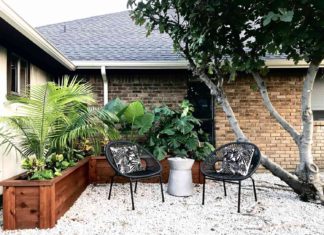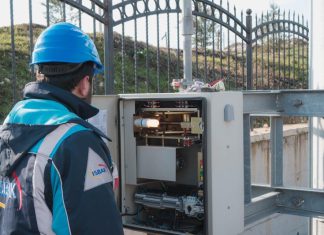Stormwater management is an effective measure to decrease the streamflow or runoff of melted snow or rainwater into lawns, streets, and other sites. It also ensures the enhancement of water quality. When the soil absorbs the stormwater, it filters the water to refill aquifers or runoff into rivers and streams.
However, when the ground gets hit with heavy rainwater, it results in ground saturation and leads to excess moisture formation. This extra moisture runs into road ditches and storm sewers. This water often transmits eroded soil, bacteria, chemicals, debris, and other pollutants into the water bodies like lakes, streams, rivers, or even wetlands.
Table of Content
- Stormwater Management: How Does it Help?
- Stormwater Management: Processes & Steps You Must Know
- Water Sensitive Urban Design for Stormwater Management
- Detention Basins
- Gravity Damage
- Rain Gardens for Stormwater Management
- Infiltration Systems
- Bioretention Swales for Stormwater Management
- Pump Stations
- Final Thoughts
Stormwater Management: How Does it Help?
In urban and suburban areas, impenetrable or water-resistant surfaces like roofs and pavements prevent the ground from soaking up precipitation naturally. Instead, water flows rapidly into the drainage ditches, sewer systems, and storm drains, resulting in sanitary sewer system overflow, muddiness (or turbidity), erosion, infrastructure damage and flooding.
However, the best stormwater management techniques help you captivate and reuse stormwater with their “green infrastructure” to conserve or replenish natural groundwater. Holding up stormwater and getting rid of pollutants is the primary purpose of stormwater management. Impermeable and porous surfaces enable snowmelt and rainfall to soak into the soil.
In stormwater management, the Grey infrastructure like culverts, conventional piped drainage, storm sewers, gutters, and the Blue/Green infrastructure protects and replenishes the natural water cycle.
Stormwater Management: Processes & Steps You Must Know
1. Water Sensitive Urban Design for Stormwater Management
WSUD or Water Sensitive Urban Design is a technique for urban areas to integrate the entire water cycle management into the urban development operation. Here, the process includes the following:
- Integrated management of wastewater, drinking water, surface runoff, and groundwater to protect the cultural, recreational, and environmental values of water
- Beneficial use and storage treatment of streamflow or runoff
- Proper treatment and replenishment of wastewater
- Proper use of vegetation for treatment requirements and water-efficient landscaping and to enhance biodiversity
- Proper utilisation of water-saving techniques within and outside institutional, industrial, commercial, and domestic premises to ensure the minimal requirement of drinking and non-drinking water supplies
So, the WSUD process integrates every other water resource, including wastewater, groundwater, surface water, and urban-roof runoff.
2. Detention Basins
One of the most common stormwater management processes – basins – alleviates stormwater streamflow to a level that ensures protecting the downstream drainage system performance and related flood risks from getting severely affected. The detention basins are made to drain dry right after any rainfall event. This process results in the introduction of new recreational chances for society.
3. Gravity Damage
In most parts of Australia, open channels and underground drains carry stormwater flows into the wetlands. The subsurface drains are commonly called the “minor system” as their flow capacity is explicitly designed to look after the rain events.
The flow capacity of the roadway complements the underground drains, and the process is known as the “major system.” The integrated capacity of the roadway and the underground drains is designed to deal with any larger and highly significant event, which has the chance to occur once in 20-100 years.
4. Rain Gardens for Stormwater Management
Rain gardens are simplistic planted depressions or declinations made to get rid of the excessive rainwater flow from your house roof, refill the groundwater, assist runoff in penetrating the soil underneath and decrease peak streamflows from the site.
When the rain gardens are planted, people take care of them, getting planted with sustainable species or native plants that can adapt to the local climate. This is an effective stormwater management process that can be used at every scale and is something that your home can use to play a crucial role in stormwater management in your area. However, this technique requires ongoing maintenance.
5. Infiltration Systems
An infiltration system typically consists of a flimsy dug trench or ‘tank,’ which detains a specific runoff volume and consequently penetrates the stored water into the surrounding soil. This process helps decrease runoff volumes by ensuring a roadway to treat runoff for refilling local groundwater.
These techniques are designed to penetrate runoff on-site and subsequently decrease the overall water volume that flows from a site into the urban drainage network system. This ensures lowering the developmental impact on peak flow volumes. The technique also involves multiple processes (mainly filtration) to cleanse the runoff and enhance the water quality.
6. Bioretention Swales for Stormwater Management
Bioretention swales are also known as bioretention trenches or filtration trenches. These are effective water filtration systems, which ensure holding streamflow to enable it to penetrate. A prescribed filter media like a sandy loam is used to filter the runoff as it filters downwards under gravity.
Then, the filtered runoff will be collected into the filter media base through the penetrated pipes and flows into storages or downstream waterways for effective reuse.
If the undisturbed soil conditions seem favourable, you can promote infiltration from the bioretention swale base for refilling local groundwater and controlling water shortages in the area. Also, this stormwater management process needs ongoing maintenance.
7. Pump Stations
When it comes to low elevation areas that cannot be treated adequately with gravity drainage alone, pump stations help a lot. This technique or process will become increasingly important in dealing with recent gravity stormwater outflows due to increased sea levels.
Final Thoughts
It has become crucial to educate yourself on the locations where snowmelt and rain water flow on your property when there’s no chance for the ground to absorb it. Here, implementing the best above-mentioned stormwater management techniques will decrease streamflow and ensure the runoff is clean when it leaves the property.
To successfully implement these stormwater management techniques, you’ll need good teamwork between the contractors and staff and need to have a proper understanding of the NPDES permit requirements.
So, choose the provider with years of expertise in supporting any industrial facility or urban area with their stormwater compliance needs.















